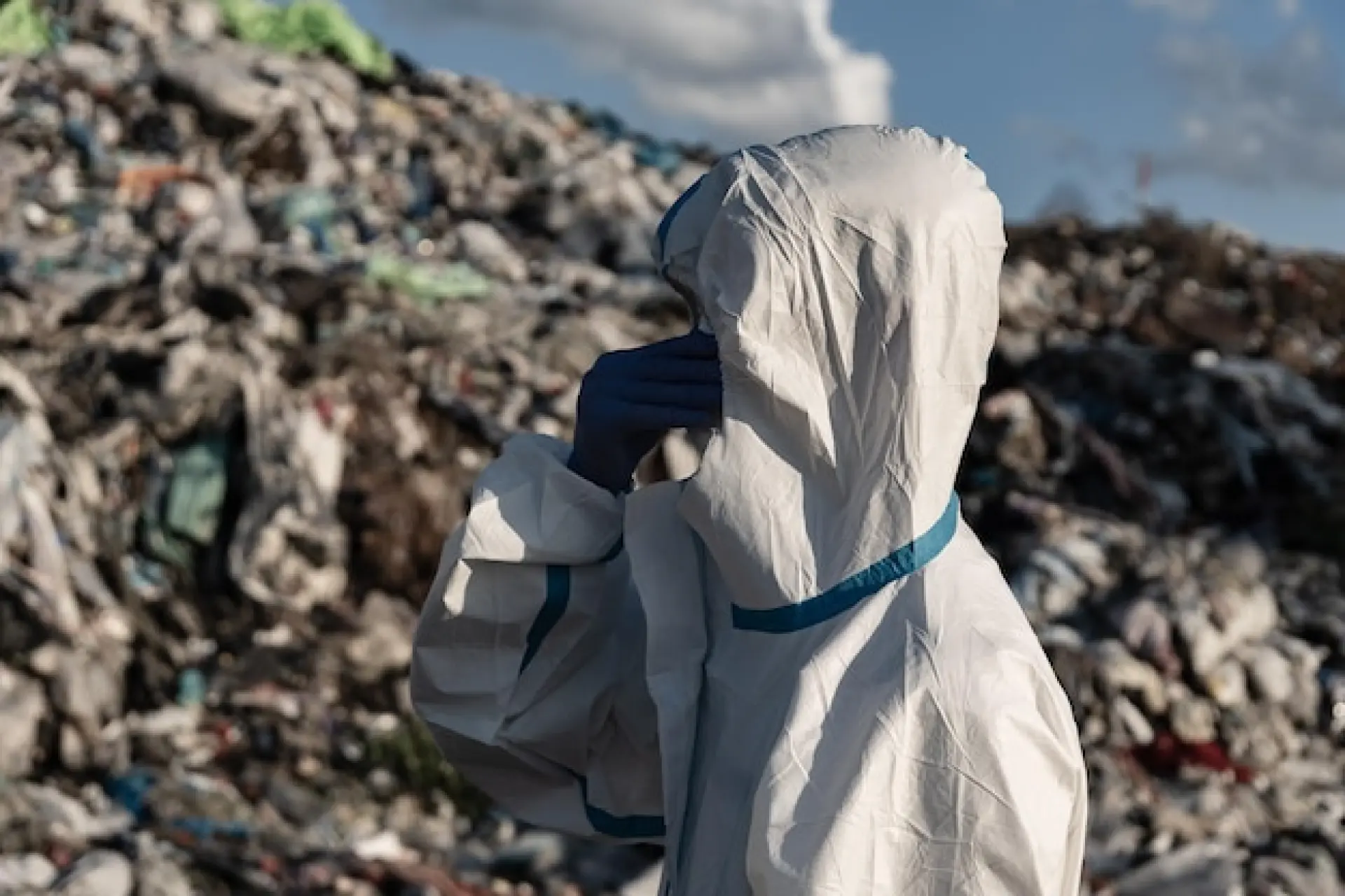What are common mistakes when working with non-licensed asbestos? Get equipped with the knowledge you need for working with Non-Licenced Asbestos; identify risks, use the right gear, minimise dangers.
Failing to Complete Proper Asbestos Training
For a construction worker, failing to complete adequate asbestos training can put you and those around you at serious risk. Such exposure to asbestos can result in a number of rather severe health conditions, like lung cancer, mesothelioma, and asbestosis.
Without proper training, many individuals can unknowingly disturb structures or materials that contain asbestos, and release their harmful fibres into the air. This can endanger their own health, alongside the health of their clients, colleagues, and the general public. It is the legal duty of employers to make sure workers handling asbestos products or buildings are thoroughly trained.
Category B is asbestos training for those involved in any non-licensed asbestos work, whereas Category C is training for those involved in high-risk, licensed asbestos work. These forms of training are unlike Category A, of which is asbestos awareness training, and is most commonly given to plumbers, roofers, painters and decorators, heating engineers and gas fitters, electricians, etc. Category A is for those who aren't involved in removing or handling asbestos products or materials but still need some awareness as to how to avoid risks and leave it undisturbed.
Non-licensed asbestos work can include anything from drilling into materials that could contain asbestos to working inside properties or on sites with asbestos present. This kind of training is paramount, as it equips a host of workers with all the knowledge they need to assess the risks that surround them while on the job. They'll learn to use the right equipment and protective gear, and follow all the control measures that minimise the dangers.
Employers must know that without making this strict training available to workers, they could be in the firing line, and end up dealing with costly clean-ups, legal consequences, and in some cases, business closures.
Find out more about asbestos training Aberdeen.
Not Conducting a Risk Assessment
Not carrying out thorough risk assessments before beginning any work in an area with high levels of asbestos can present numerous health and safety risks. A thorough assessment is needed in almost every field, but especially construction and demolition jobs, to identify all the possible hazards. That way, it is much easier to put together a collection of suitable precautions that will prevent exposure.

Without taking this step into consideration, workers may plough through their job and unknowingly disturb ACMs (Asbestos-Containing Materials), which releases harmful fibres into the environment. These fibres are invisible and can result in long-term respiratory illnesses like lung cancer and mesothelioma. Assessing the work area is such an important part of any managerial task, but especially asbestos management as it is so dangerous.
Before any construction, maintenance, or renovation work takes place, a complete inspection must be carried out to determine if there are any ACMs present. Inspections include reviewing the existing building records, undergoing asbestos surveys, or seeking professional advice from outside sources. If asbestos is found, control measures are quickly put in place to prevent any large or minor disturbances.
Using Incorrect PPE (Personal Protective Equipment)
Using incorrect Personal Protective Equipment (PPE) can put many individuals at risk of exposure or injury to hazardous substances. PPE is made to keep workers safe when they're in the workplace facing particular hazards; however, if they aren't worn properly or the wrong type is used, they may be as ineffective as using none at all. For example, wearing gloves that are not chemical-resistant can result in skin irritation or burns, and using ill-fitting face masks may fail to filter harmful particles.
For example, wearing gloves that are not resistant to chemicals can result in burns or skin irritation, while using an ill-fitting face mask may fail to filter harmful particles effectively. Employers and workers must ensure that PPE is suitable for the task and meets required safety standards.
Improper use of PPE can lead workers into a false sense of security, meaning the likelihood of health issues and accidents may increase, as workers will assume they are protected when they are not. To prevent such from happening, regular equipment and gear checks are needed, and it is the responsibility of the employers to supply this PPE to make sure everything is suitable for the environment.
Some of the asbestos-related PPE that is supplied includes:
- Disposable Coveralls:- These are fitted with elasticated ankles, cuffs, and hoods to minimise exposure.
- RPE (Respiratory Protective Equipment):- This involves a full or half-face respirator with P3 filters that help filter the fibres in the air.
- Disposable Gloves:- These are usually made of latex or nitrile to avoid direct contact with asbestos as much as possible.
- Dedicated Footwear:- Often on construction work, many wear steel-toed boots; however, when working with asbestos, you're encouraged to wear lace-less boots that can be cleaned easily and don't contain trapping fibres. Boots will also need to be covered with disposable materials.
- Eye Protection:- This helps protect your eyes from debris and dust, and this is especially important when removing or cutting asbestos products.
Improper Asbestos Waste Disposal
One of the most important parts of asbestos work is proper waste disposal. Improper disposal can pose a number of environmental and health risks. Asbestos must be handled with plenty of care, as it is incredibly dangerous.
You cannot dispose of asbestos in general waste bins or landfill sites that aren't suitable for hazardous or toxic materials. Illegal dumping is not only bad for getting rid of any materials and products, but it is also bad for getting rid of asbestos-containing materials, as they can lead to mass exposure.

This puts workers, the environment, and the general public at an increasing risk of asbestos-related diseases and other health issues.
To prevent these risks, asbestos waste needs to be double-bagged in UN-approved bags that are explicitly labelled and then disposed of at a licensed waste facility specifically for hazardous waste.
When handling and transporting asbestos waste, you must be a specialist contractor who follows all strict legal guidelines. There are severe penalties for failing to dispose of asbestos correctly, and this is due to the long-term health consequences it can cause the public.
Ignoring Legal Requirements and HSE Guidelines
You mustn't ignore the legal requirements in any field you're in, especially guidelines from HSE (Health and Safety Executive), as they can lead to numerous consequences. Following these rules in high-risk environments like industrial workplaces, construction, and asbestos removal is paramount due to the threats.
These regulations are in place not to be ignored but followed so that workers and the public can be protected from all hazards. Failing to meet the standard of these safety regulations can result in heavy fines, legal action, and sometimes criminal prosecution according to the severity of the circumstances and your level of responsibility. Any employers and workers who disregard these laws expose people to dangerous conditions which increase the likelihood of illnesses, injuries, and long-term health issues.
A lack of compliance with HSE guidelines can lead to costly delays, site shutdowns, and even damage your company's reputation entirely, especially if you are becoming known in the local area for unlawful practices. Adherence to safety regulations, risk assessments, and thorough training are needed to maintain a practical, safe, legal working environment for all.
Are you looking for professional asbestos surveys in Aberdeen and Aberdeenshire? Learn more about our detailed inspection and reporting services using the link below:

